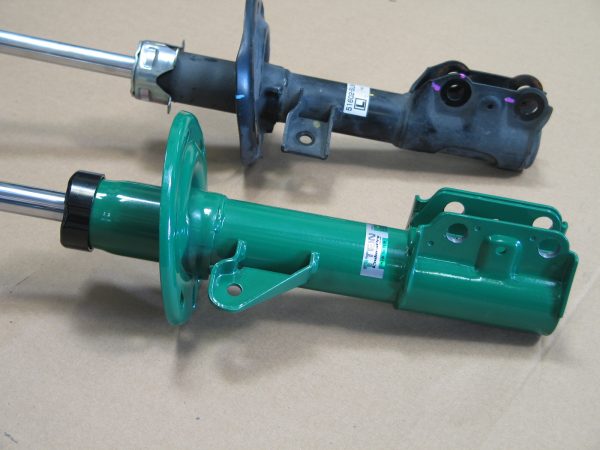This is commonly addressed by other aftermarket shock absorber manufacturers, but not necessarily performance suspension manufacturers (or coilover manufacturers, for that matter).
Quite honestly, shock absorbers have to be one of the most neglected components on a car. After all, if you’re still able to drive your car after 100,000 miles (as an example), you may have a hard time in telling the difference in ride feel from now compared to when the car is new. We’re not saying you don’t know your car. We’re just saying that many people may not notice small changes in their car over time. If the shock absorber failed from relatively quickly from when it was “new”, for sure you’d notice the difference.
Notice, I’m not saying the 100,000 mile old shock absorbers are blown (gas and oil leaking from the shock). THAT would be completely noticeable to anyone, at least in my opinion. There would be a complete lack of ride comfort and handling quality.

That’s important to note because not all shock absorbers blow out or fail in very dramatic fashion. Instead, a lot of them will eventually leak their gas (typically nitrogen) charge. Quite honestly, many OEM shock absorbers are built to very high standards. After all, parts manufacturers, especially those supplying car manufacturers, wouldn’t want to deal with such liabilities for defective products.
But still, why is this important to note? If the shock absorber isn’t blown, just drive with them!
Sure, you can do that. But have you ever driven a car aggressively, or had to make evasive maneuvers with worn shock absorbers? It doesn’t feel confidence-inspiring, for sure. And it gets worse if you decide to install a set of lowering springs on worn shock absorbers. The slightly stiffer spring rate can exacerbate poor ride and handling, even with the benefits a lowering spring can provide.
Lowering springs aside, continuing to drive on worn shock absorbers can eventually lead to other parts breakages over time. Tire wear will be inconsistent, CV joints can go bad, bushings and/or control arms can prematurely go bad. But again, most importantly is the safety aspect of your car. Excessive body roll or brake dive can lead to handling limits being severely reduced. Remember what I said about confidence-inspiring? If you start losing control of your vehicle, it’s very hard to make the necessary changes in your driving to compensate for the worn components on your car.
KYB has some fantastic videos you can see on YouTube showing a comparison of driving on good and bad shock absorbers, as well as the effects of having Electronic Stability Control turned off and on during those comparisons. I know, not TEIN related, but still a good and insightful video. Look it up when you have time.
With that, we recommend getting your shock absorbers inspected every 30,000 miles (approximately 2 years). That’s just to make sure your shock absorbers function fine. If you’re using a coilover kit, we recommend an inspection annually. In snowy areas, or areas that use salt on their roads, check your suspension before and after the season. That’s mainly due to the movable components on a coilover (spring seats and seat locks). You want to make sure those are securely torqued to specification, and also that the threaded components are clear of debris/salts.
If you’ve noticed one of your shock absorbers or one of your coilovers being worn, contact us for replacement parts. Luckily we sell replacement parts, or do a rebuild (if you have an older TEIN coilover model).
